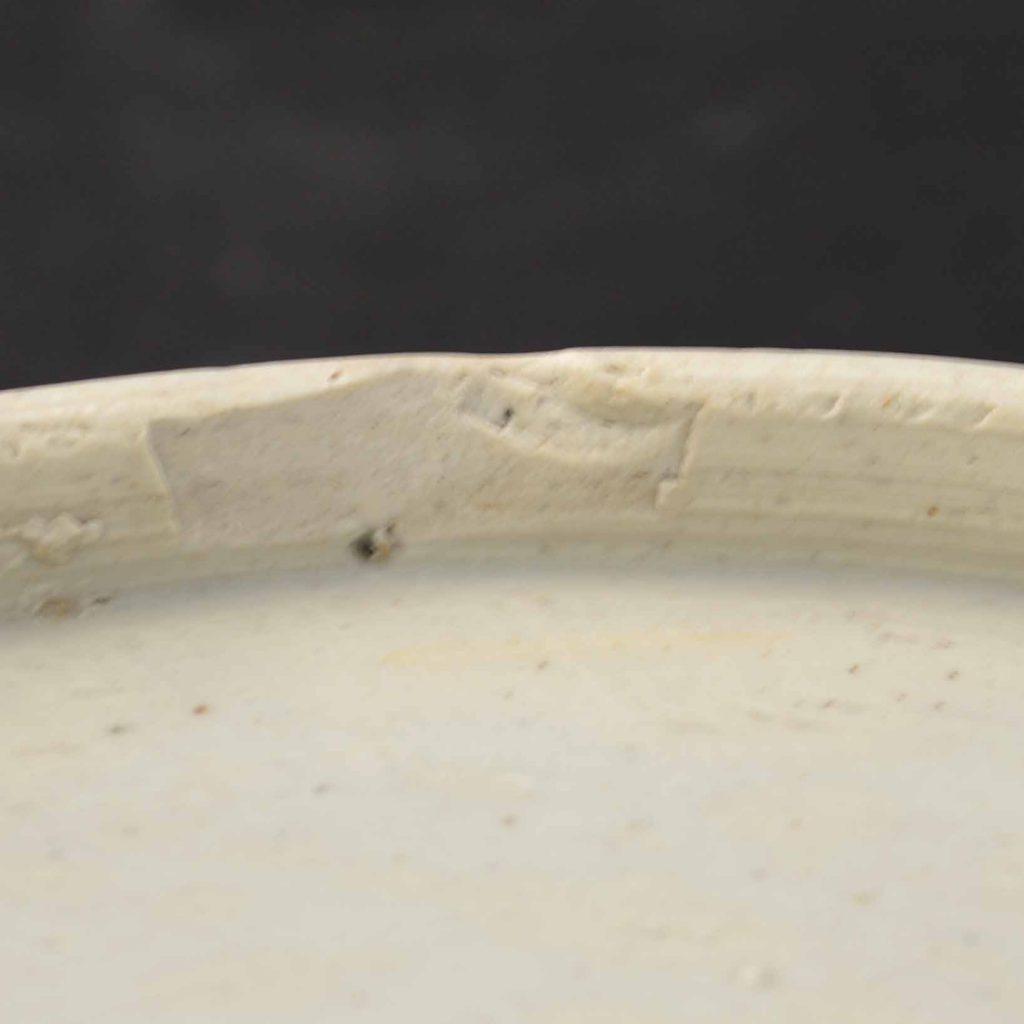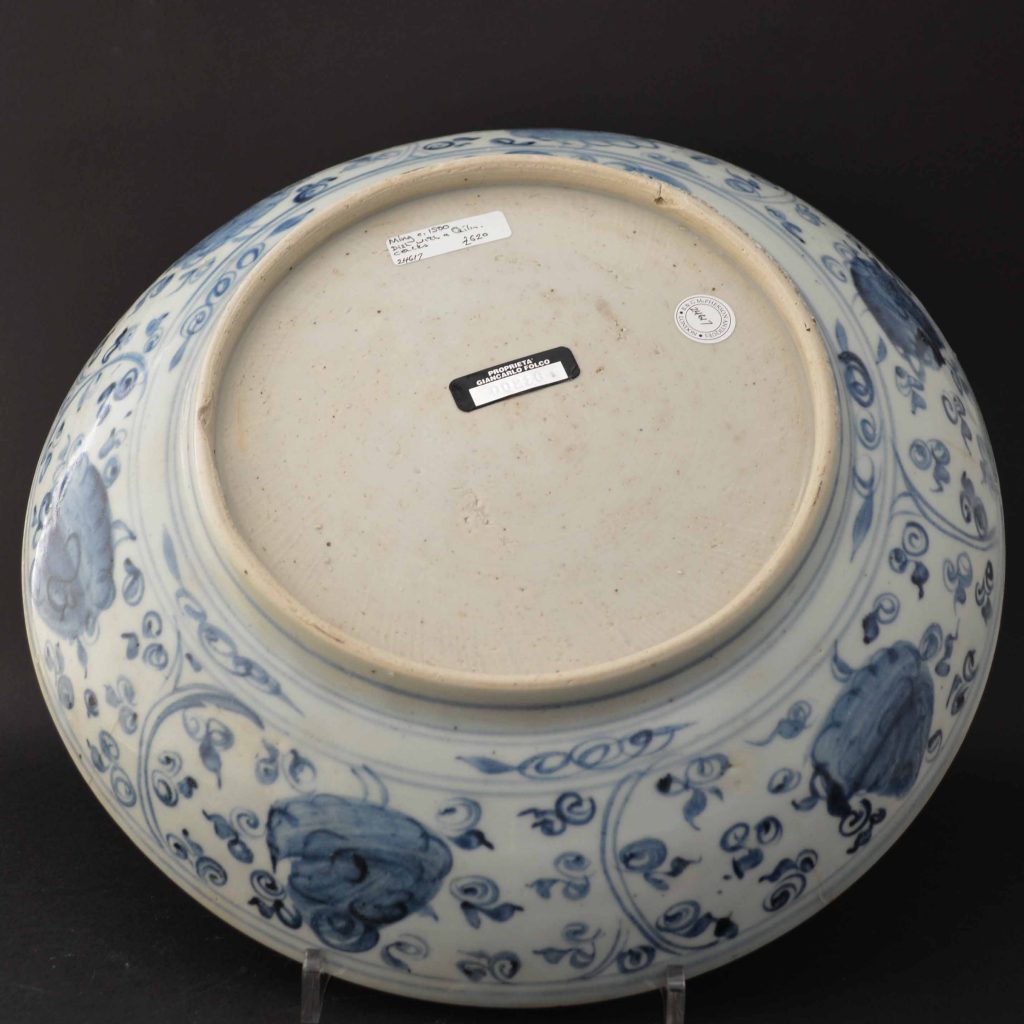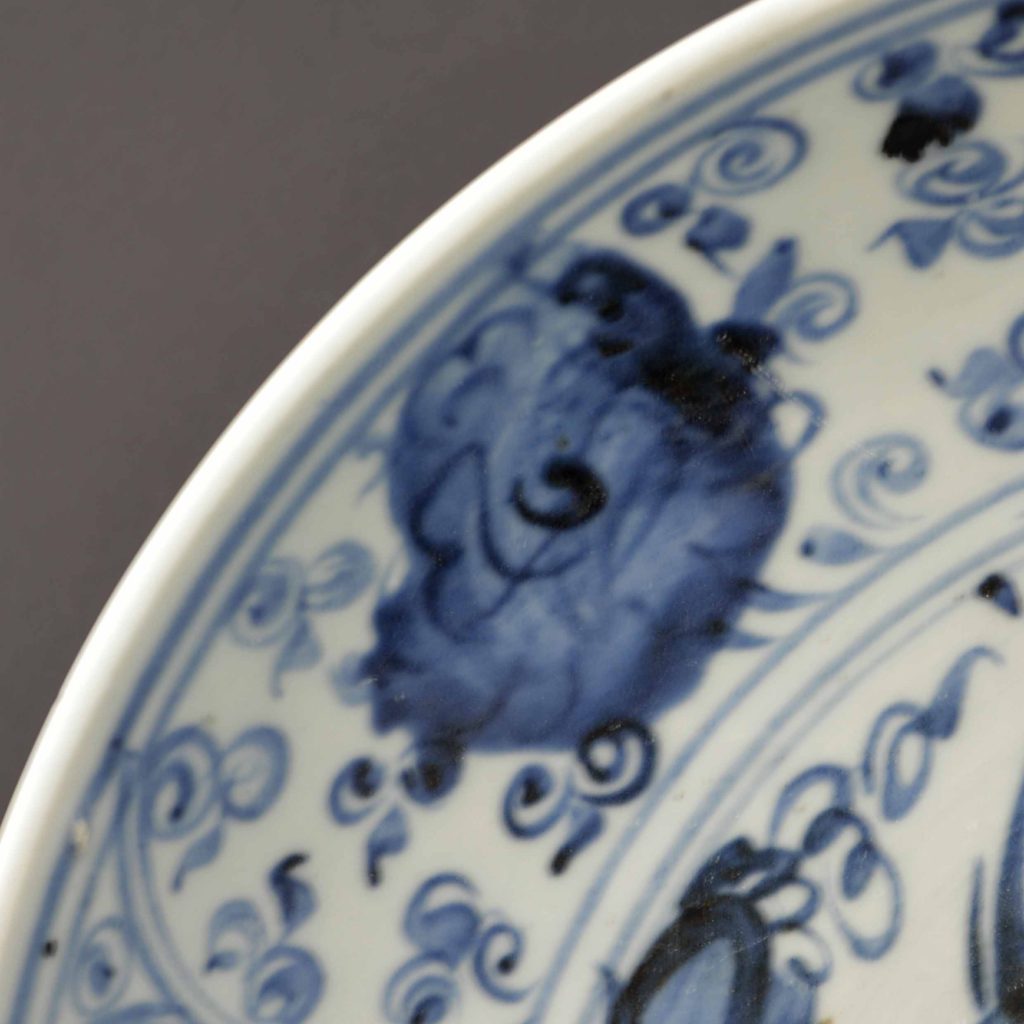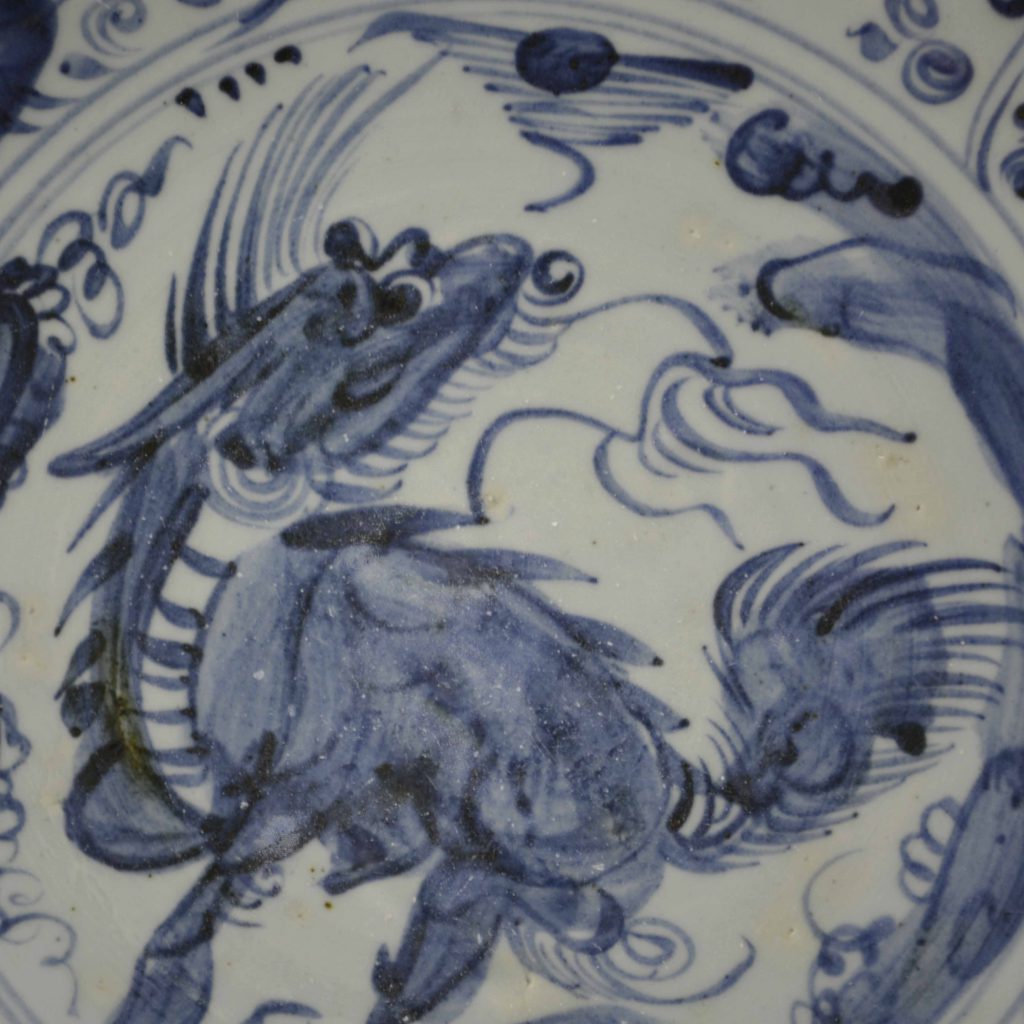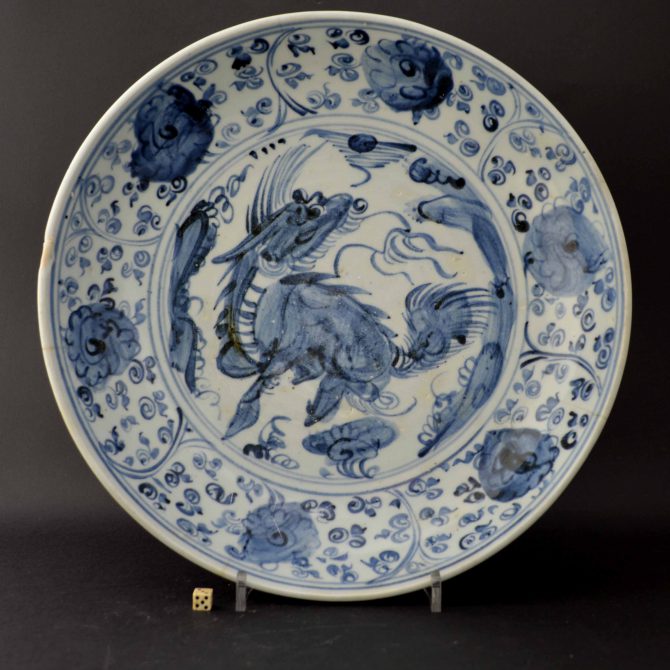
A Ming Blue and White Porcelain Dish
A Ming Blue and White Porcelain dish, Hongzhi 1488 – 1505 or Zhengde 1506 – 1521 period, Jingdezhen kilns. Painted in a bold style using a wet brush with a large Qilin in a landscape with a border of flowering peony.
SOLD
- Condition
- Poor ; four large rim cracks, the surface is a bit worn through general use. The tone of blue is slightly paler than in the photograph.
- Size
- Diameter : 12 inches (31 cm)
- Provenance
- Giangarlo Folco Collection (label to the base)
- Stock number
- 24617
Information
Ming Blue and White `Provincial` Porcelain :
Pieces like the present Ming Porcelain example have traditionally been referred to as `Provincial Blue and White Porcelain` because the potting and painted appear as being some what rustic. Sometimes `provincial` pieces have a great strength and freedom that can be lacking in more refined objects. Recent research in China has shown that there was little Blue and White Porcelain produced outside the main kiln complex of Jingdezhen in Jiangxi Province. The exception might be Dehua in Fujian province but the Blue and White Porcelain production from those kilns is distinct from the kilns at Jingdezhen.
Qilin or Kylin :
A Qilin (Kylin) is a mythical hooved Chinese chimerical creature. Despite its fierce demeanour it is a good omen that brings Rui (roughly translated as `serenity` or `prosperity`), longevity, illustrious offspring and wise administration. The scaly body has a dragons head, hooves and can appear to have fire issuing from its body. The male Qilin is called a Qi and the female a Lin. The male often has horns. These creatures carefully tread to avoid all living insects or destroy grass under foot, it is reputed to be able to walk on water as well as land. Qilin only appear to mankind when an emperor of the highest benevolence sits on the throne or when a sage is about to be born. There is a strong argument that the Qilin is a stylised representation of the giraffe. This is because the Qilin is referred to only since the Ming Dynasty. The time of its first reference correspond roughly with the voyages of Zheng He, there were seven voyages between 1405 and 1433 (Zheng He lived c.1371–1435). It is known that on Zheng He`s voyage to East Africa (landing, among other places, in modern-day Kenya), the fleet brought back two giraffes to Beijing. It is also known that these two giraffes were referred to as Qilins. The Emperor proclaimed the giraffes magical creatures, whose capture signalled the greatness of his power.
